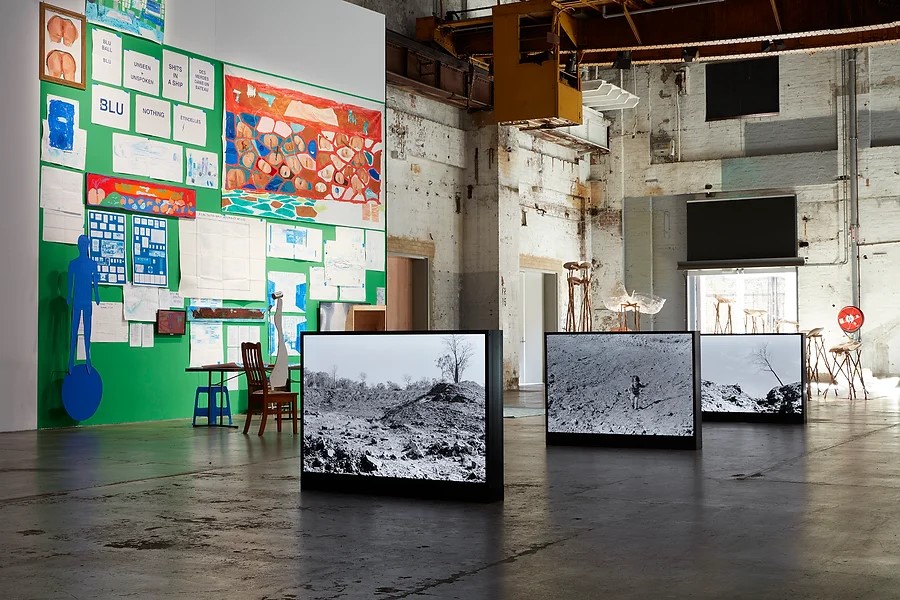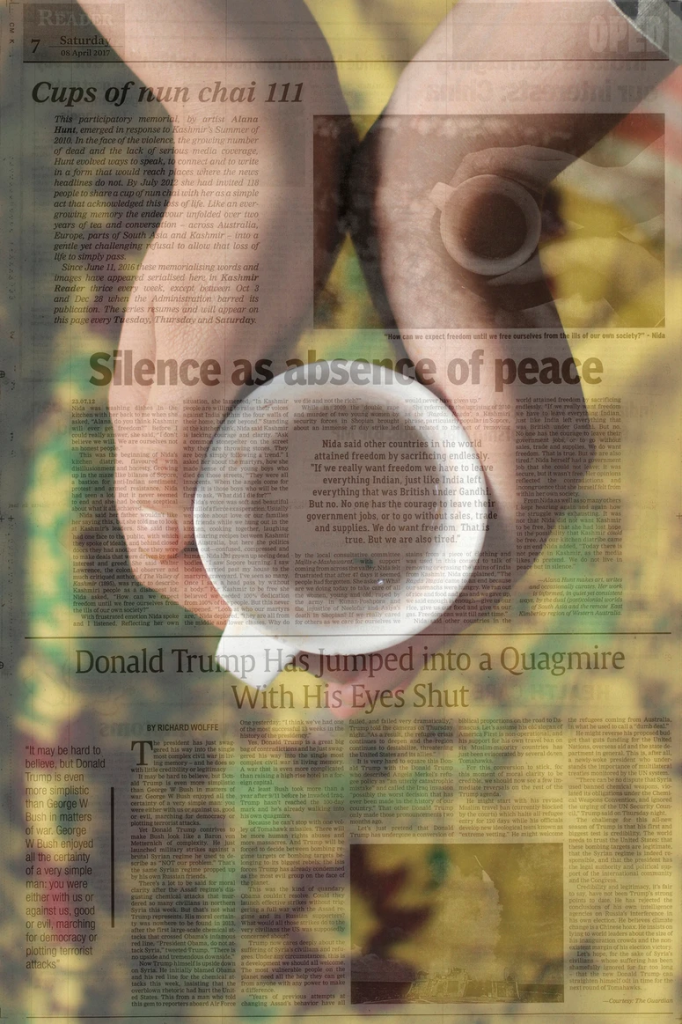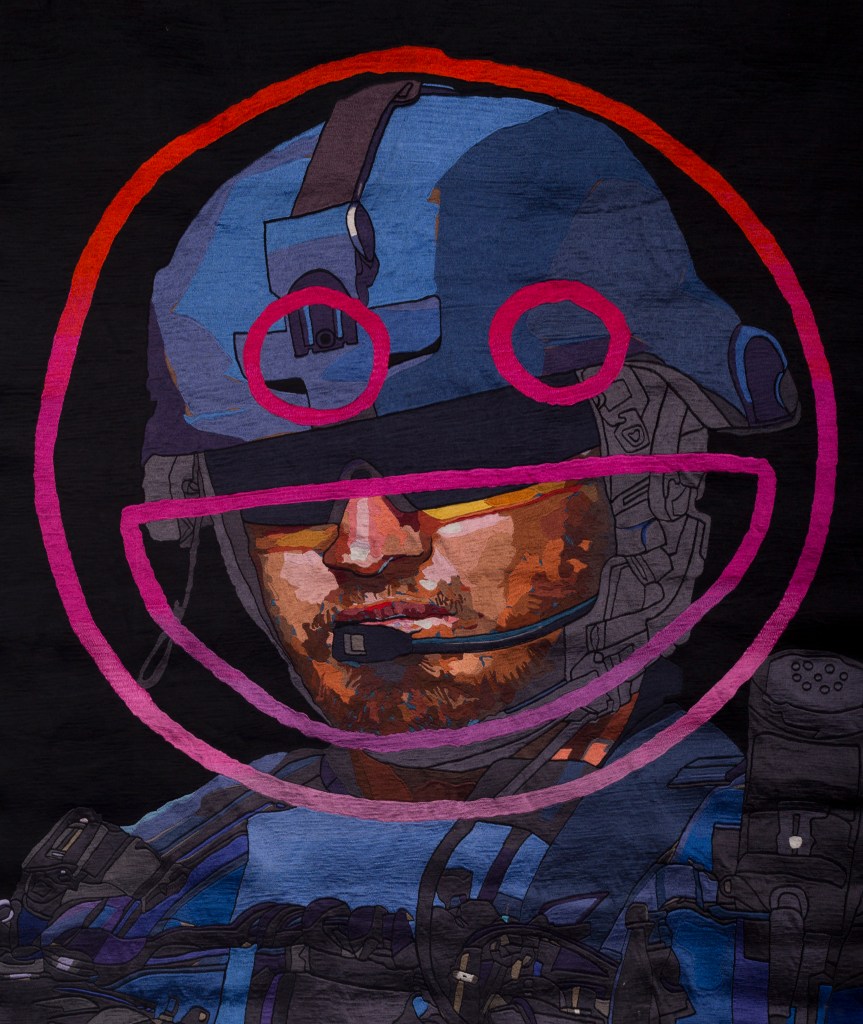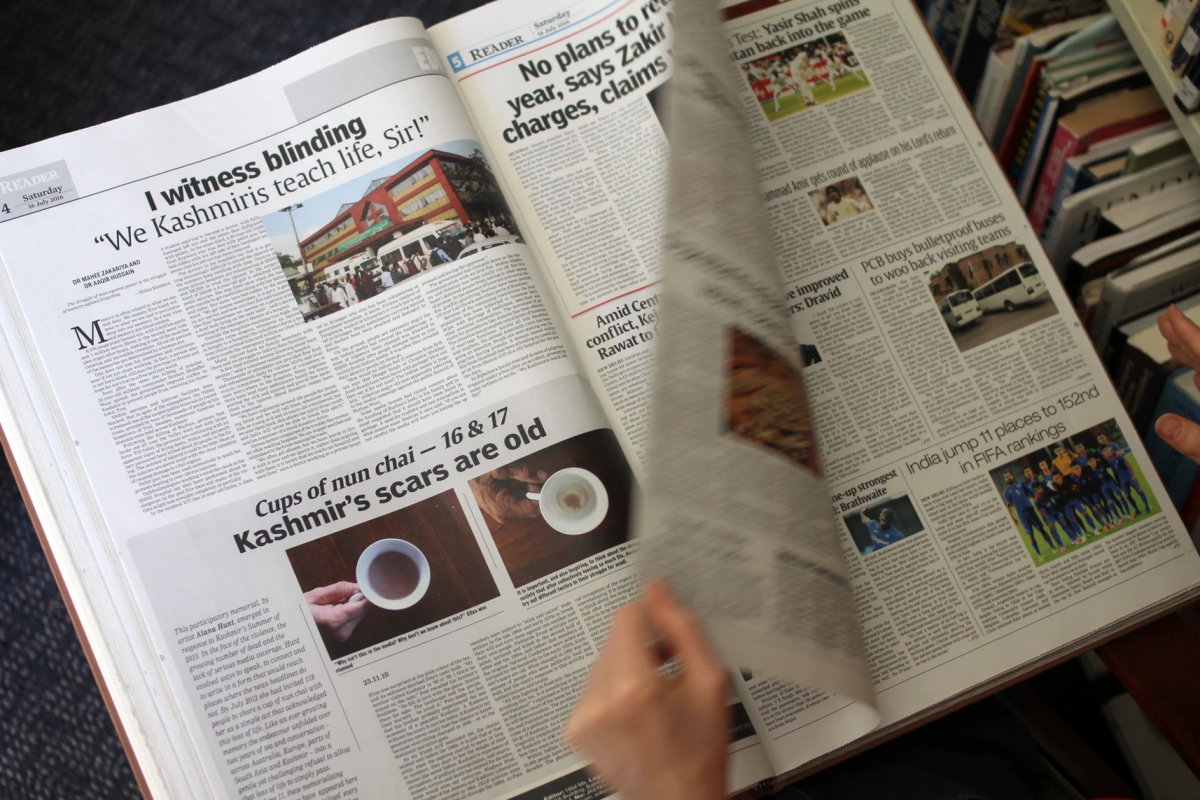Freedom of expression is a core tenet of Australian democracy, which is important as art inherently has a political dimension. However, when political messages are made explicit, they often elicit angry and passionate responses, with depictions of war and violence being especially contentious, generating vehement debates and sometimes censorship.
Discourse around the relationship between politics and arts was notably reflected in comments made by high-profile people in response to actors wearing Palestinian keffiyehs at a production for Sydney Theatre Company in December last year. In particular, Senator Dave Sharma’s comment is troublesome: ‘I don’t think the arts is the place to deliver these sorts of overtly political messages… It’s unhelpful and undermines social cohesion.’
This article explores why art and politics are inseparable and whether Australian institutions, and even the public, are sensitive to political art.
In this article:
The politics of arts addressing conflict
It is difficult and counterintuitive to suppress political elements in art. In fact, Alana Hunt whose works often engage with political issues, including war and violence, explains that she doesn’t classify her work as “political arts”.
She emphasises, ‘I don’t set out to make “political art” as such. I try to make meaningful work … that responds to the worlds I am a part of and resonates within (and also beyond) the specific worlds it was made from. I think this is absolutely vital.
‘If people want to classify this kind of approach as political art, that is fine, but I do worry when the “political” is seen as a separate category rather than a thread woven into everything with varying degrees of intensity, texture and colour,’ she continues.
Professor of Art at the School of Media, Creative Arts and Social Inquiry, Curtin University, Kit Messham-Muir, who specialises in contemporary art and visual culture surrounding conflict, has a similar view regarding the connection, saying that he is ‘an art theorist who believes creating art is, and should be, a fundamentally political act’.
Prefacing with an important point, Messham-Muir stresses that despite two high-profile conflicts in Ukraine and Gaza currently dominating media coverage, numerous conflicts worldwide are underreported.
‘Mainstream politics has become “culture war” politics, particularly since 2016, with Brexit and the election of Donald Trump… I think that confluence of culture war and geopolitical conflict has changed conflict more generally today, which gives it a sense of escalation,’ he says.
Violent conflict, however, ‘is ever-present and often those that are complex … are the deadliest, such as the ongoing conflicts in the Democratic Republic of Congo, which over three decades have cost around six million lives’.

Hunt’s work is a testament to how art can help to draw attention to conflicts beyond mainstream “culture wars”. This includes her works about the military occupation of Kashmir and resistances since 2009. She also highlights works about violence inherent in non-Indigenous life as it materialises on Miriwoong Country, framing ‘colonisation not as something historic but present’.
In explaining her works’ reach, Hunt says they have ‘circulated to varying degrees within and outside of the spheres of art, and I do make a lot of aesthetic and conceptual choices to try to ensure my work contributes in certain ways, but it is best for others to determine the impact’.
Messham-Muir further offers his perspective on art’s impact in Australia in addressing conflicts, stating that his research shows ‘art can be powerful in the face of war, but also that it can do virtually nothing to prevent it or change its course’.

On art’s political power, he notes, ‘So much of the politics of contemporary conflict occurs in the visual and aesthetic realm, and it is important that contemporary art addresses that, insofar that contemporary art can arrest moments, alter temporalities, reorder understandings and skew perspectives.’
However, Messham-Muir highlights that art’s impact is also complex and dubious as reflected by the ‘tapestry at the United Nations of Pablo Picasso’s Guernica, a reproduction of one of the grandest humanitarian statements against war, which was just covered over with a blue curtain when Colin Powell presented George W Bush’s dossier of lies to argue for the need for America to invade Iraq,’ he says.
‘Can it intervene, in any meaningful sense? I would like to imagine it could, and I still hold out hope that it’s possible, but deep down I know that it’s largely a fantasy.’
Backlash against ‘political art’
Despite the potential power of art, controversies sometimes arise when the works engage directly with war and violence. A recent example is when Anna Schwartz Gallery dropped Mike Parr for his work about the Israel-Palestine conflict.
Public vandalism and defacing of political artworks is also somewhat common, including Luke Cornish’s 2019 Bondi Beach mural about the Australian Border Force’s violence towards asylum seekers. Another is the 2020 Marrickville mural, depicting Donald Trump and Scott Morrison shaking hands amid a display of weapons and atop of a pile of bleeding skulls. The mural was also destroyed.
These issues stem back longer, with examples including Zanny Begg’s 2004 work Checkpoint for Weapons of Mass Distraction, which criticised Australia’s involvement in the Iraq War, and was removed by a local government. Similarly, Azlan McLennan, who primarily engages with political content, has been censored several times, including a 2004 piece, Fifty-Six, about Palestine’s plight that remains relevant today.
Another critical example that caused much controversy is Abdul Abdullah’s two works in the Violent Salt exhibition that toured in 2019-2021. The tapestries were removed from Artspace Mackay and attracted much fury from RSL members and the Patriots motorcycle group members.

Abdullah tells ArtsHub, ‘I have experienced backlash and threats. I’ve been spoken about by [Herald Sun columnist] Andrew Bolt and [National Party MP] George Christensen, I have received consistent hate mail… [and] death threats. There have been public petitions to have my work removed and people I am associated with have been attacked.
‘Largely, it has little to do with the actual work I make and more to do with my name and what its connotations represent in some people’s imagination. Most of the specific accusations made against me regarding things that I have said, are more to do with assumptions of my intentions and inferences, which are, almost without fail, untrue,’ he continues.
Messham-Muir says that prejudice against Abdullah’s name and religion was suggested in comments under Mackay councillor, Martin Bella’s Facebook post, who framed Violent Salt as an attack on veterans’ well-being.
He points out that the disgraceful comments section is perhaps characterised more by Islamophobia than concern for veteran well-being, some of which includes:
‘Abdul Abdulla [sic], says it all’, ‘The artist’s name is Abdul Abdullah. Kind of explains everything’, ‘notice the “artists” name? Nuff said…’, ‘The name says it all. Disgraceful!’, ‘Look at the “artist’s” name. He clearly supports Islamic fundamentalism since our boys have been the undoing of the Taliban’ and ‘If he went back to wherever he is from and did this to one of that countries [sic] own he’d more than likely be beheaded’.
Messham-Muir says, ‘The controversy really did encapsulate the confluence of geopolitics and culture war politics that characterises both politics and conflict today.’
He also contrasts the culture war response to media allegations of war crimes by Ben Roberts-Smith around the same time as Violent Salt’s controversy, with commentators accusing investigations of being a “witch hunt” and a leftist “beat up”.
So, is Australia sensitive?
Abdullah maintains that he doesn’t believe the broad “Australian public” or institutions are easily offended or sensitive regarding his work, ‘but rather a vocal minority who feel threatened by my contributions to the conversation’. He emphasises that he doesn’t believe he is controversial and that his ‘political positions that have remained consistent throughout my practice align with how the majority of Australians think’.
Messham-Muir confirms this belief, saying, ‘We like to think of our public institutions as robust bastions of liberal democracy, where the difficult questions are asked. But then there’s the reality of running an organisation with a real-world duty of care for people potentially placed in a vulnerable situation.
‘In the Violent Salt case, there was concern for front-of-house volunteers and staff. So, the sensitivity, I think, is often a bureaucratic one of workplace safety and public liability rather than an aversion to risking offence,’ Messham-Muir continues.
Read: Self-representation and cultural references in the work of Telly Tuita
Although agreeing with these challenges, Alana Hunt adds, ‘I understand institutions are balancing a lot of factors. So are our politicians and our media. But, like all of us, they need to make decisions about how they want to work and what they stand for. And have the bravery to do it.’
In particular, Hunt draws from the ‘inability of arts organisations to reach a consensus and call for a ceasefire in Palestine’, questioning how calls for bombing to stop ‘have become taboo’.
She continues, ‘Since 7 October, censorship is unfolding across the arts in ways I have never imagined were possible. But rather than being frozen or silenced by that fear, I like to think of the gains that become possible by following what feels right and the beautiful camaraderies and solidarities that can be built amid that process. This is how we unpick that messy state of contradiction and compromise, and start to embody real forms of freedom for people in the world, and for artists, journalists and all forms of storytellers too.’
Hunt highlights that, fortunately, artists increasingly hold art institutions to account ‘on a whole range of issues from gender, race, class and accessibility, to the climate emergency, Indigenous rights and war’.
So, even if broadly, Australians may not exactly be overly sensitive to arts about war and violence, it is important to allow the arts to have more nuanced discussions rather than suppressing certain perspectives out of fear.
This article is published under the Amplify Collective, an initiative supported by The Walkley Foundation and made possible through funding from the Meta Australian News Fund.





